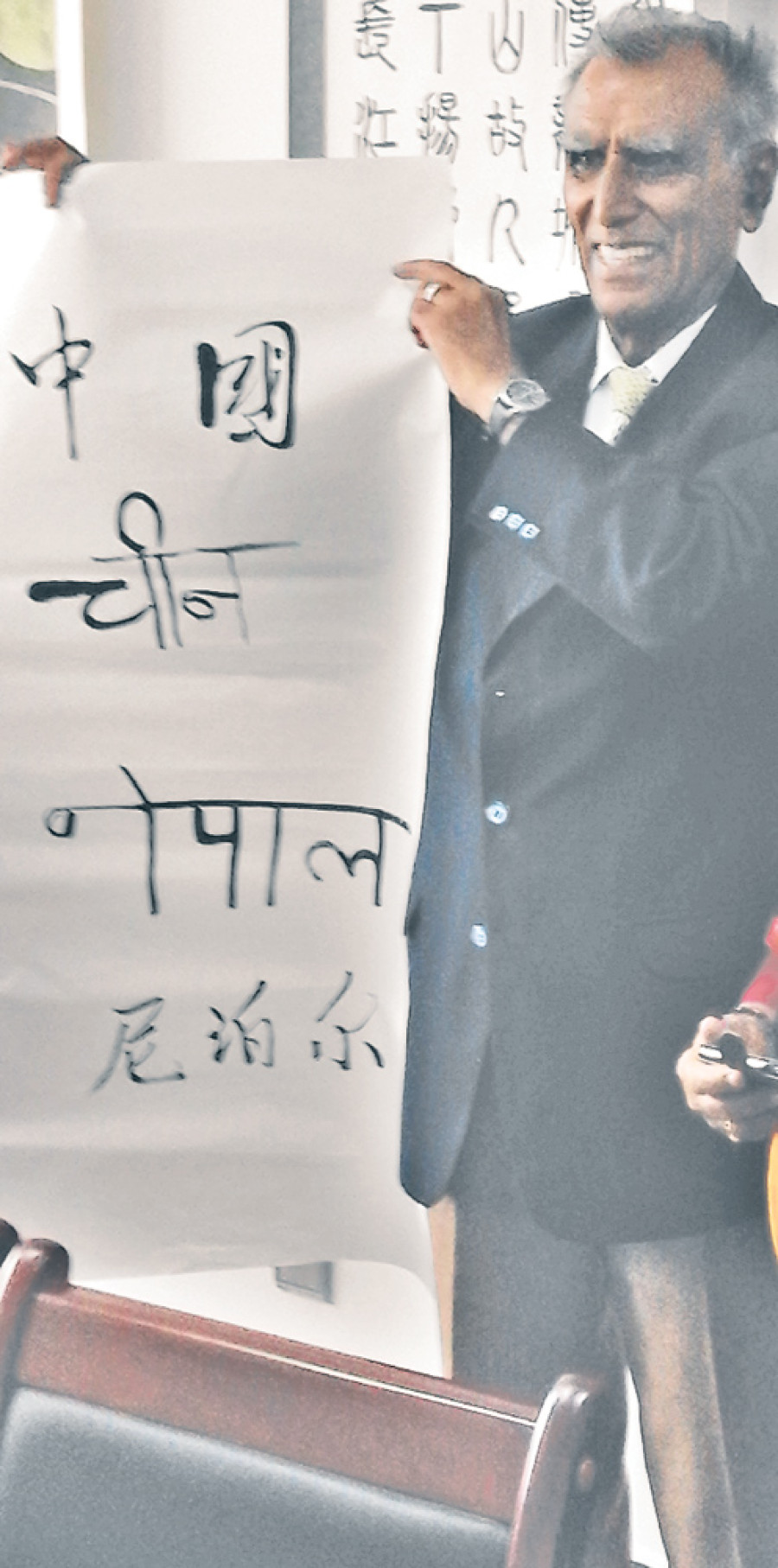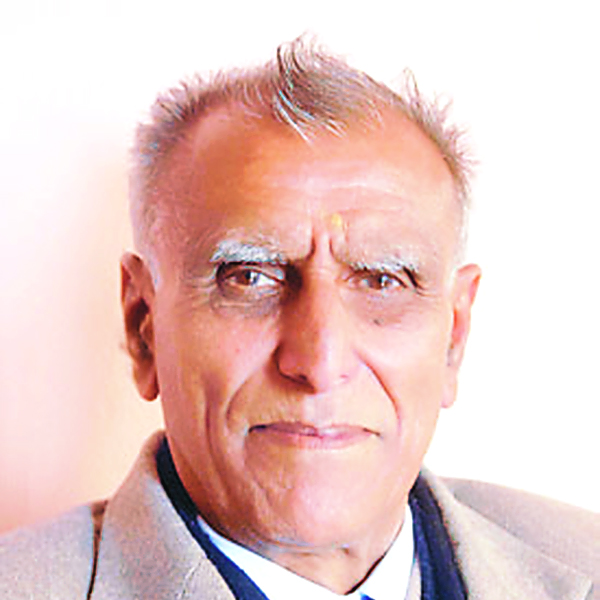Miscellaneous
Contextualising development
In July this year, I was part of a 15-member delegation from the Nepali Congress (NC) on a visit to the People’s Republic of China on invitation of the Chinese Communist Party (CPC). On our flight to Chengdu, playing ‘hide and seek’ with the clouds and snow-clad mountains, we flew over the vast arid plateau of the Tibetan Autonomous Region—the roof the world. At the time, we had marvelled over the remote and desolate landscape, but unbeknownst to us, the landscapes we were flying over, and China’s endeavour to transform it, would feature again, and prominently, on our week-long visit.
Ram Chandra Pokhrel
In July this year, I was part of a 15-member delegation from the Nepali Congress (NC) on a visit to the People’s Republic of China on invitation of the Chinese Communist Party (CPC). On our flight to Chengdu, playing ‘hide and seek’ with the clouds and snow-clad mountains, we flew over the vast arid plateau of the Tibetan Autonomous Region—the roof the world. At the time, we had marvelled over the remote and desolate landscape, but unbeknownst to us, the landscapes we were flying over, and China’s endeavour to transform it, would feature again, and prominently, on our week-long visit.
The NC and the CPC have always shared closed ties. NC’s 1950 manifesto had unequivocally supported the Chinese revolution and the dawn of the People’s Republic of China. A visit in 1960 by the then prime minister and party president, BP Koirala, and his subsequent meeting with Chairman Mao, was a historic watershed moment for high-level contact, not only at the national level but also between the two parties. The boundary treaty signed during the visit still serves as the solid foundation for Nepal-China relations. Moreover, the democratic socialist NC and CPC also have shared a common cause—championing the upliftment of peasants and wage earners. Much of NC’s early formative days were informed, in part, by the historic 1947 labour strikes in Biratnagar that was led by BP Koirala and organised by Girja Prasad Koirala. NC’s close allegiance to the labour movement continues till this day.
On the first day of our visit, we were in Lanzhou, the capital of the Gansu province, on tour of their provincial party school. In the morning we visited different training units, classrooms, library, meeting rooms and the hostel rooms. It is worth mentioning that we were pleasantly astonished by how well equipped the dorm rooms for the trainees were as compared to those of lecturers and department heads. It was remarkable to see that the school had placed such clear focus on the trainees.
Later, we were briefed with an in-depth presentation on the Chinese system, the nation’s development and its fast-growing economy. The professors were quick to reiterate how this was modelled on the Chinese experience and that the CPC’s ideological base was developed and refined in a Chinese context, and marched ahead through practical implementation that would eventually drive the nation to become a world economic power. The ideological transition from Marxism to Maoism and finally Deng’s ‘open policy’ was very interesting. As the scholars put it, CPC was of the clear view that the copy of the ‘Western model’ would not have been very practical.
How China modelled an economic policy uniquely suitable for the Chinese context and how the nation laboured to convert its landscape in order to achieve that vision would become a common thread for our trip traversing through the vast, and oftentimes remote, Chinese country side. On the third day, the Nepali delegation reached Wushan by train, passing through vast semi-desert topography with hills, valleys and gorges for a backdrop. The four-hour long railway journey provided a wonderful glimpse of how China endeavoured to convert arid land and deserts into cultivable farmlands brimming with green vegetables and food grains. It was interesting to see how carefully rain water was harvested and utilised to retain moisture in what was otherwise dry and barren fields. At Wushan our delegation visited different districts, villages, settlements and vegetable farms where local party leaders of each level were waiting us, eager to recant how prosperity was now overflowing in this once remote region. Again at Ningxia in the Hui Autonomous Region—one of the five minority regions in China—we witnessed how the semi-arid and a ‘windy and sandy’ region by the Northern Yellow River had been irrigated to be transformed into smooth, plain and fertile soil—a veritable ‘oasis’.
Our visit would ultimately have to be cut short due to the convening of a special session of the parliament at home, forcing us to cancel most of our engagements and travel to Beijing for a string of meetings with CPC’s high officials. In the first meeting with Zhang Xuyi, the deputy director general of the Asian Bureau of the International Department of the CPC, we were again presented with a very concise briefing about the CPC and the Chinese way of development. DDG Zhang expressed his happiness on the growing ‘direct-relations’ with the country’s oldest party, Nepali Congress, and also extended thanks and appreciation for supporting China on all major issues. Apart from political issues, the discussion covered wide-ranging issues related to development, trade and tourism. The Nepali delegation drew attention to the need for developing the existing Kerung-Rasuwa and Tatopani border points and the opening of other major passes like Koralla, Hilsa and Taklakot. The delegation emphasised that the Koralla and Kerung-Rasuwa routes could be developed as major corridors linking the two economic giants India and China through Nepal. The proposed railway link from Singatse to Kathmandu, Pokhara and Lumbini, that would greatly support and boost the Nepali economy, also featured in the meeting.
Later, the Vice-Minister Zheng Xiaosong of the International Department of the Communist Party of China (IDCPC) hosted a banquet in honour of the Nepali delegation. At the event, Vice-Minister Zheng was quick to reiterate that the CPC was the party of proletariats and workers that believed in Marxism but developed and reformed itself in the Chinese context—which was markedly different from the western model. As Zheng emphasised, CPC believes that each nation has its own set of unique problems that can only be solved from within. He expressed that a country like Nepal could take China as an example and march ahead, preserving her sovereignty and maintaining ‘stability’—which is essential for every country’s overall economic development.
The Vice-Minister Xiaosong maintained that China expected more high-level exchange visits in the future. He expressed that China have always wanted to see a prosperous Nepal, and would continue to support for her endeavour towards economic development. Zheng also thanked the Nepali government and the NC for supporting China on all major issues, like the South China Sea, and continued support for the ‘One China Policy’.
At the event, the Nepali delegation extended their thanks for the Chinese support during the devastating earthquake and the severe crisis it caused, and during the transit embargo. The delegation also thanked China for its support for the newly-promulgated constitution, before conveying excitement over Chinese president Xi Jingpin’s highly-awaited visit to Nepal.
In reflection, our visit had some key takeaways. First, it served to underscore the historic ties the two countries, and the two parties, share—the BP Memorial Cancer Hospital, established with Chinese support, being a great example. But, more importantly, studying and understanding China’s steadfast commitment to development and prosperity and its willingness to persist at the face of great odds was a poignant reminder that Nepal too needs to devise a localised model for development, taking into account its own unique set of potential and limitations. Surely, only then can it become a true bridge that connects, and collaborates with, the two economic powerhouses—China and India.
The author is a Member of the Legislature-Parliament and was the head of the NC Delegation to China




 8.12°C Kathmandu
8.12°C Kathmandu








%20(1).jpg&w=300&height=200)

